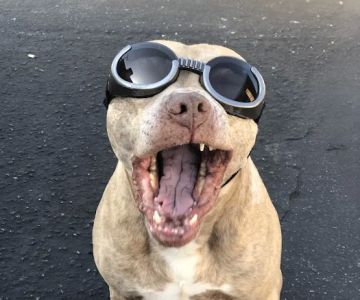Understanding Why Puppies Bite
As a new puppy owner, one of the first challenges you might face is dealing with your puppy's biting behavior. It's completely normal for puppies to bite as they explore the world around them, but it's important to understand why they do it and how to manage it. Puppies typically bite because they are teething, trying to assert dominance, or simply exploring their environment with their mouths. Understanding the root causes of biting can help you address the issue more effectively.
Step 1: Redirecting the Behavior
The first step in training your puppy not to bite is to redirect their attention to more appropriate activities. Whenever your puppy bites your hands, feet, or clothing, replace the body part they are biting with a chew toy. Puppies love to chew, and this redirection helps them associate chewing with an acceptable item. It's important to do this consistently and immediately after a bite so that your puppy can connect the action with the consequence.

1225 Warren Ave, Downers Grove, IL 60515, USA
See DetailsStep 2: Using Positive Reinforcement
Positive reinforcement is one of the most powerful tools in dog training. When your puppy refrains from biting and instead uses their chew toy, be sure to praise them and offer a treat. The key is to reward them immediately after the correct behavior. This will help reinforce that chewing on toys is a good thing, while biting humans is not. Over time, your puppy will learn that positive behaviors are rewarded, and undesirable behaviors are ignored.
Step 3: The “No Bite” Command
Teaching your puppy the “no bite” command is an essential part of the training process. Start by saying “no bite” in a firm but calm voice when your puppy starts to nibble on your hand. If your puppy stops biting, reward them with a treat. If the behavior continues, gently remove your hand and stop interacting with your puppy for a brief moment. This withdrawal of attention helps teach your puppy that biting results in the loss of playtime or affection.
Step 4: Socialization with Other Dogs
Proper socialization with other dogs is crucial for preventing biting behaviors in puppies. Puppy playgroups and dog parks can provide an opportunity for your puppy to interact with other dogs and learn appropriate play behavior. During these interactions, puppies often learn bite inhibition, which is the ability to control the strength of their bites. This is an important skill that will reduce the likelihood of aggressive or painful biting as they grow older.
Step 5: Teaching Bite Inhibition
Bite inhibition is the process of teaching your puppy to control the force of their bites. During playtime, if your puppy bites too hard, let out a yelp or say “ouch” loudly. This mimics the natural response of other dogs and helps your puppy learn that their biting behavior is too harsh. You can also stop the play immediately after a hard bite to show that the fun stops when they bite too hard. Consistent practice of bite inhibition will teach your puppy how to interact more gently with humans and other animals.
Step 6: When to Seek Professional Help
Sometimes, despite your best efforts, a puppy may continue to bite or display aggressive behavior. In such cases, it may be helpful to seek professional help from a dog trainer or behaviorist. A professional can assess the situation and provide personalized guidance tailored to your puppy’s specific needs. This is especially important if the biting behavior becomes more aggressive or if you’re struggling to make progress on your own.
Conclusion: Patience and Consistency Are Key
Training your puppy not to bite requires patience, consistency, and understanding. Puppies are learning how to interact with the world around them, and biting is often part of that process. By redirecting their behavior, using positive reinforcement, and teaching bite inhibition, you can help your puppy develop good habits that will last a lifetime. Remember, every puppy is different, and the training process may take time. Stay patient, be consistent, and you’ll see results as your puppy matures into a well-behaved adult dog.










